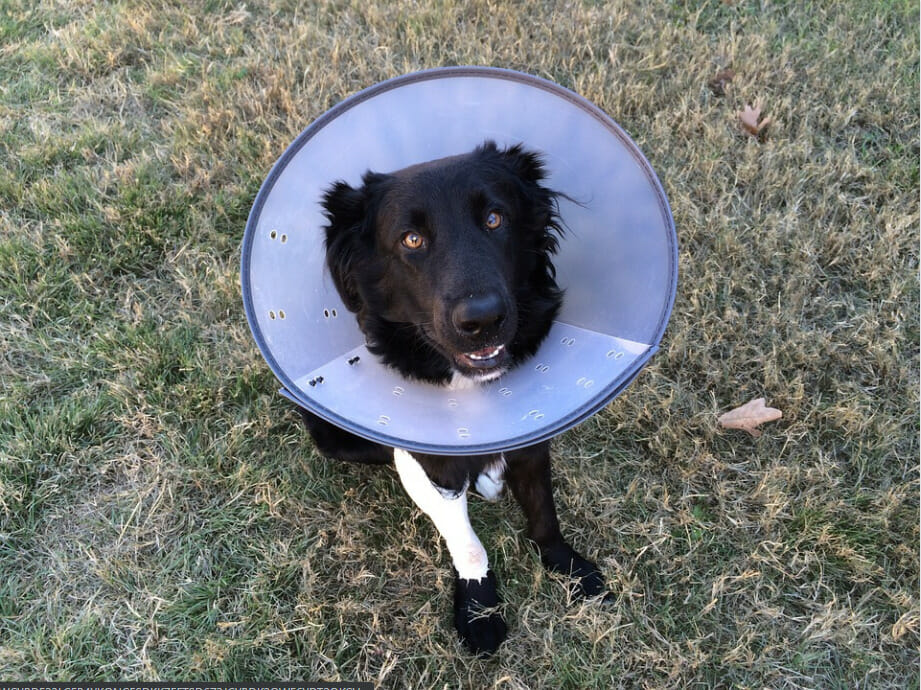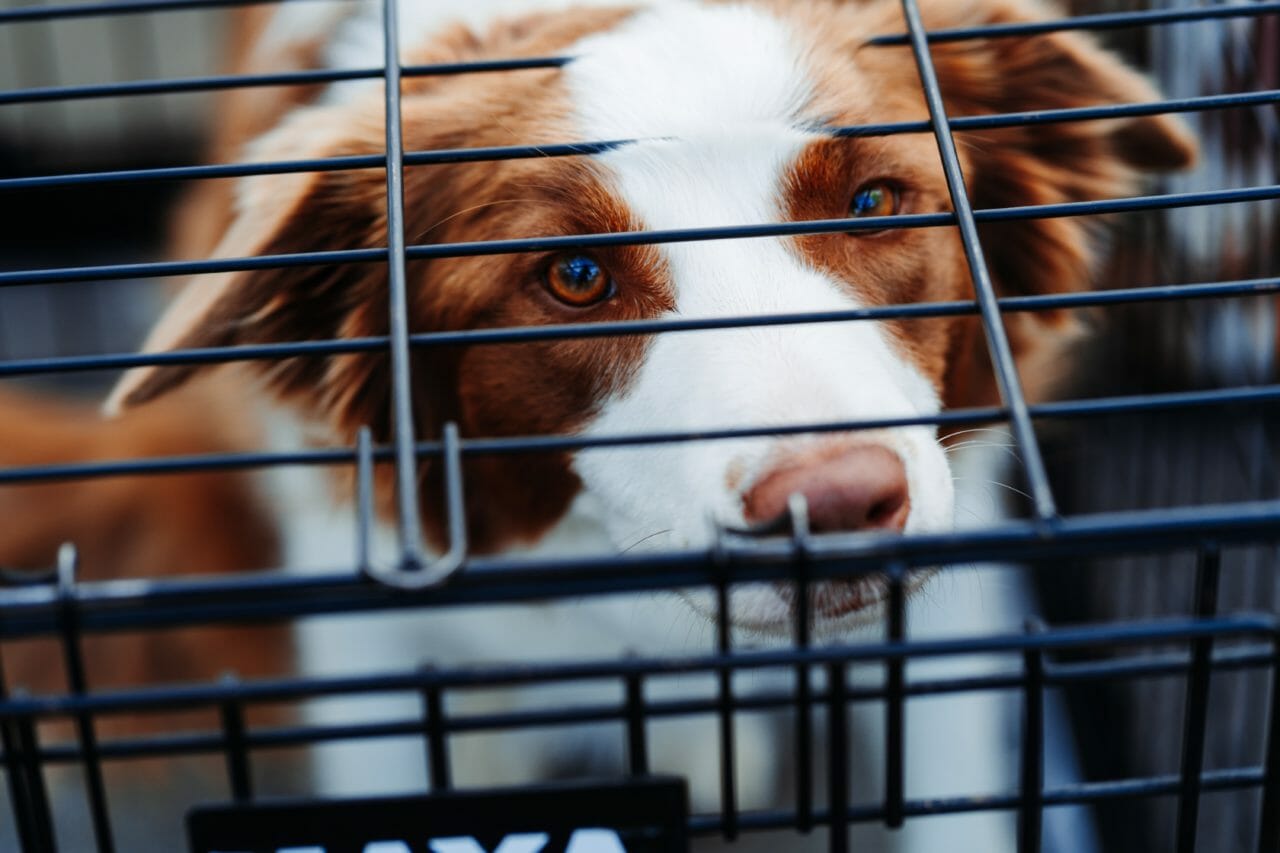Keep your pup’s paws healthy.
Your dog’s paws are one of the most important parts of their body. Paws are used for walking and running around and serve as temperature regulators and protectors from the outside world. So be sure to pay close attention to your dog’s paws and any changes that may occur.
One condition that can arise with your pup’s paws is an interdigital cyst. If your dog is constantly licking or chewing their feet, your furry friend may be dealing with a skin condition that can be quite painful..
In this blog post, the experts from PetRehab.com share everything you need to know about interdigital cysts in dogs. We will discuss symptoms, causes, and treatment options. We will also provide tips on how to prevent these cysts in the first place.
What Is an Interdigital Cyst?
An interdigital cyst is a small, fluid-filled sac that develops between your dog’s toes. These cysts usually form on the dog’s webbing that covers the space between the toes. In some cases, they may also form on the bottom of your dog’s foot.
Dog interdigital cysts are a common skin condition and can affect any dog breed at any age. They look red and pinkish in color and most likely are filled with pus. They can be as small as a pea or grow to the size of a golf ball.

What Causes an Interdigital Cyst?
Many things can cause your dog to develop an interdigital cyst.
The most common cause is a bacterial infection. Your dog’s paws constantly come in contact with different types of bacteria. If your dog has a cut or scrapes on their paw, this can provide an entry point for the bacteria to cause an infection.
Other causes include:
Allergies
When your dog is allergic to something, they are constantly licking their paw as a way to relieve the itchiness. This constant licking can lead to an interdigital cyst due to the irritation that is caused by the allergies.
Foreign Objects
If your dog steps on something sharp, it can cause a cut or scrape on their paw. As we mentioned, it can lead to a bacterial infection, allowing an interdigital cyst to form.
Hormonal Imbalance
A hormonal imbalance can also cause an interdigital cyst. This is most common in female dogs dealing with menopause or pregnancy.
Unhealthy Diets
Dogs that are overweight or have a poor diet are more prone to developing interdigital cysts. This is because more pressure is put on their paws, which causes uneven distribution of their weight and can cause irritation.
The Dogs Coat
If your dog has a short coating of fur, the hairs on their paw can break off and get lodged in between their toes. This can irritate and lead to an interdigital cyst.
What Are the Symptoms of a Dog Interdigital Cyst
The most common symptom of an interdigital cyst is your dog licking or chewing at their paw. If you notice that your dog is constantly licking one paw more than the others, this could be a sign that they are dealing with an interdigital cyst.
If you notice them licking it frequently, doing a physical inspection of your dog’s paw can be helpful. Look for any of the following:
- Swelling
- Discoloration
- A lump
- Heat around the lump
- Redness
Your dog may also have trouble walking if the cyst is on its foot. This is because it can be painful for them to put any pressure on the affected area.
If you notice any of these symptoms, we recommend taking your dog to the vet as soon as possible.

How Can the Vet Help Your Dog’s Interdigital Cyst?
At the vet, they will physically examine your dog’s paw and ask you questions about their symptoms. An x-ray may also be taken to determine the size of the cyst and if there are any foreign objects inside.
From there, they will develop the best treatment plan for your dog. The most common course of treatment is antibiotics to help clear the infection. A combo of both oral and topical antibiotics is usually the most effective. Anti-inflammatory medication may also be prescribed to help ease your dog’s pain and swelling.
The vet may recommend surgery to remove the interdigital cyst if the cyst is large. If a foreign object is in fact inside , surgery is the best course of action to remove the object. Surgery is typically considered a last resort but may be the best option for some dogs.
Prevention for Dog Interdigital Cysts
The best way to prevent an interdigital cyst is to keep your dog’s paws clean and free of any foreign objects. Checking their paw regularly, especially if they are prone to allergies or have short fur, can help catch anything that may irritate them before it leads to a cyst.
Other ways to prevent dog interdigital cysts include:
Altering their walking path
Softer ground like grass and sand can help take the pressure off their paw and distribute their weight more evenly. This will help to prevent any irritation that could lead to an interdigital cyst.
A healthy diet
A healthy diet is important for your dog’s overall health but can also help to prevent interdigital cysts. Maintaining a healthy weight will put less pressure on your dog’s paws, which, as we mentioned, can cause an interdigital cyst.
Keep on top of their allergies
If your dog is prone to allergies, keeping those allergies under control can help to prevent an interdigital cyst from forming. Allergies can lead to inflammation and irritation, which are both risk factors for developing a cyst.
Final Thoughts
Interdigital cysts are a common issue for dogs but one that can be easily treated with the help of your vet. By keeping an eye on their paws and being aware of the symptoms, you can catch them early and get them the treatment they need.
Prevention is always the best medicine, so taking steps to avoid interdigital cysts in the first place is always a good idea.



